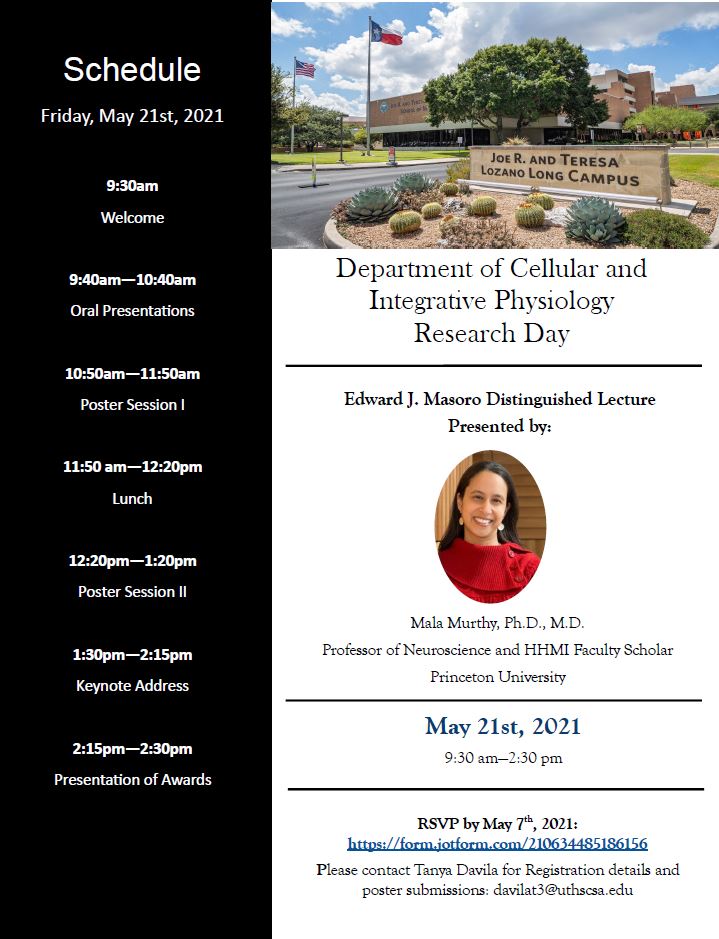Cellular & Integrative Physiology Research Day
Event Date & Time
May 21, 2021Location
Event Details:
You're Invited to the Department of Cellular and Integrative Physiology Research Day! This event will be held virtually on Friday May 21st, 9:30 am - 2:30 pm. The goal of this event is to highlight the excellent research being carried out by our students, postdoctoral trainees and faculty. This year’s Edward J. Masoro Distinguished Lectureship will be given by Dr. Mala Murthy, Professor of Neuroscience and HHMI Faculty Scholar at Princeton University. Dr. Murthy’s work in understanding animal communication, animal behavior modeling, and how whole brain states mediate behavior in Drosophila is fascinating and is extremely applicable to the kinds of research being done in this department.
This Research Day will include talks by graduate students and postdoctoral fellows, poster presentations, and a keynote address by Dr. Murthy. This is a great opportunity for us to recognize our exceptional trainees who have not only made outstanding scientific contributions to their field, but also contributed to the Department of Cellular and Integrative Physiology through leadership and service during the previous calendar year.
Event Details:
RSVP IS REQUIRED - Please RSVP to this event via jotform, by May 7th, 2021: https://form.jotform.com/210634485186156.
2021 Planning Committee:
Aryana Cruz (Chair)
Abdulhafiz Imam Aliagan
Mackenna Wollet
Amy Wu
Lynette Daws
Jun Hee Kim
Tanya Davila
Michelle Pena

About the Speaker(s)
Talk title: Neural Mechanisms for Dynamic Acoustic Communication
Abstract: Social interactions require continually adjusting behavior in response to sensory feedback. For example, when having a conversation, sensory cues from our partner (e.g., sounds or facial expressions) affect our speech patterns in real time. Our speech signals, in turn, are the sensory cues that modify our partner’s actions. What are the underlying computations and neural mechanisms that govern these interactions? To address these questions, my lab studies the acoustic communication system of Drosophila. To our advantage, the fly nervous system is relatively simple, with a wealth of genetic tools to interrogate it. Importantly, Drosophila acoustic behaviors are highly quantifiable and robust. During courtship, males produce time-varying songs via wing vibration, while females arbitrate mating decisions. We discovered that, rather than being a stereotyped fixed action sequence, male song structure and intensity are continually sculpted by interactions with the female, over timescales ranging from tens of milliseconds to minutes – and we are mapping the underlying circuits and computations. We have also developed methods to relate song representations in the female brain to changes in her behavior, across multiple timescales. Our focus on natural acoustic signals, either as the output of the male nervous system or as the input to the female nervous system, provides a powerful, quantitative handle for studying the basic building blocks of communication.
